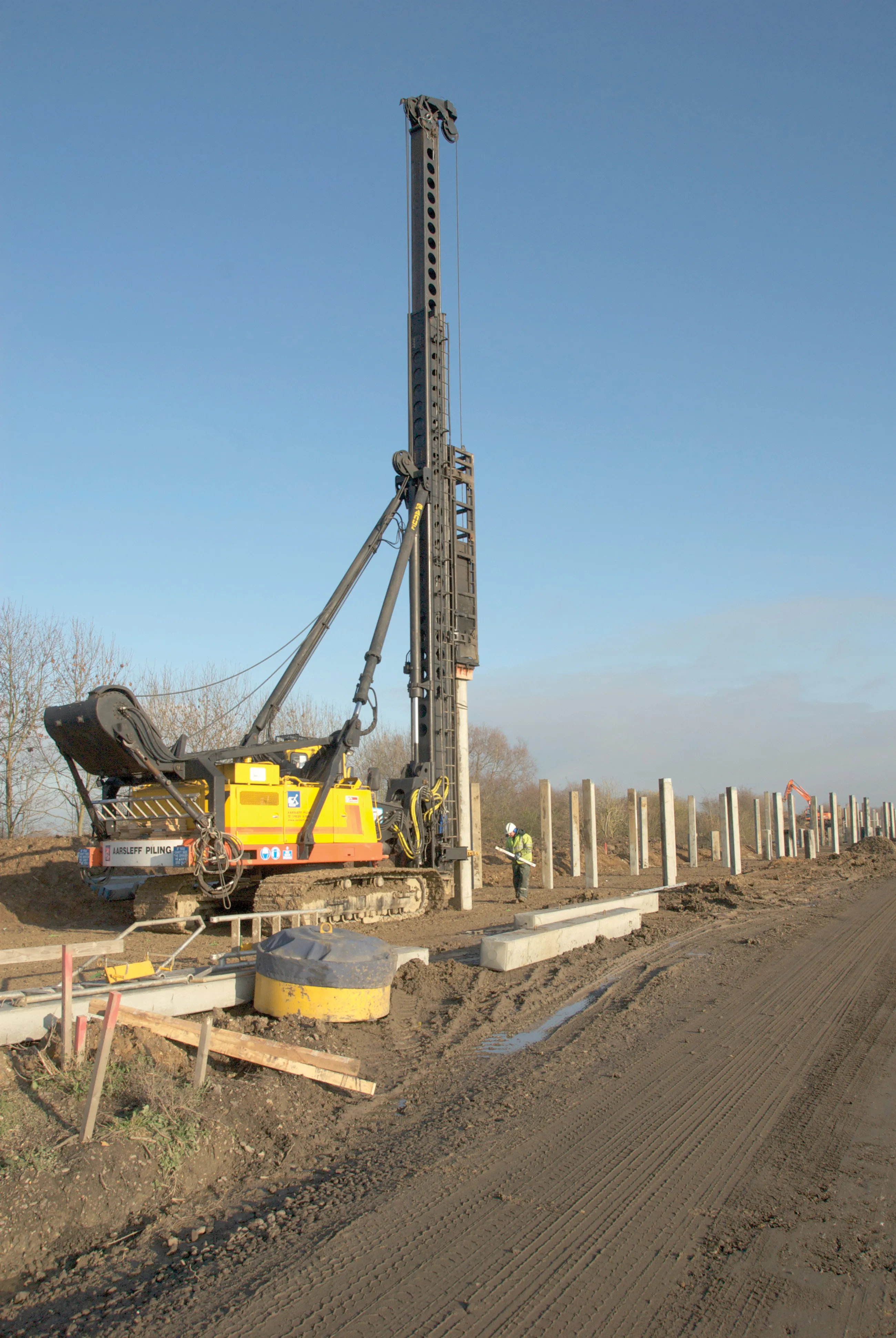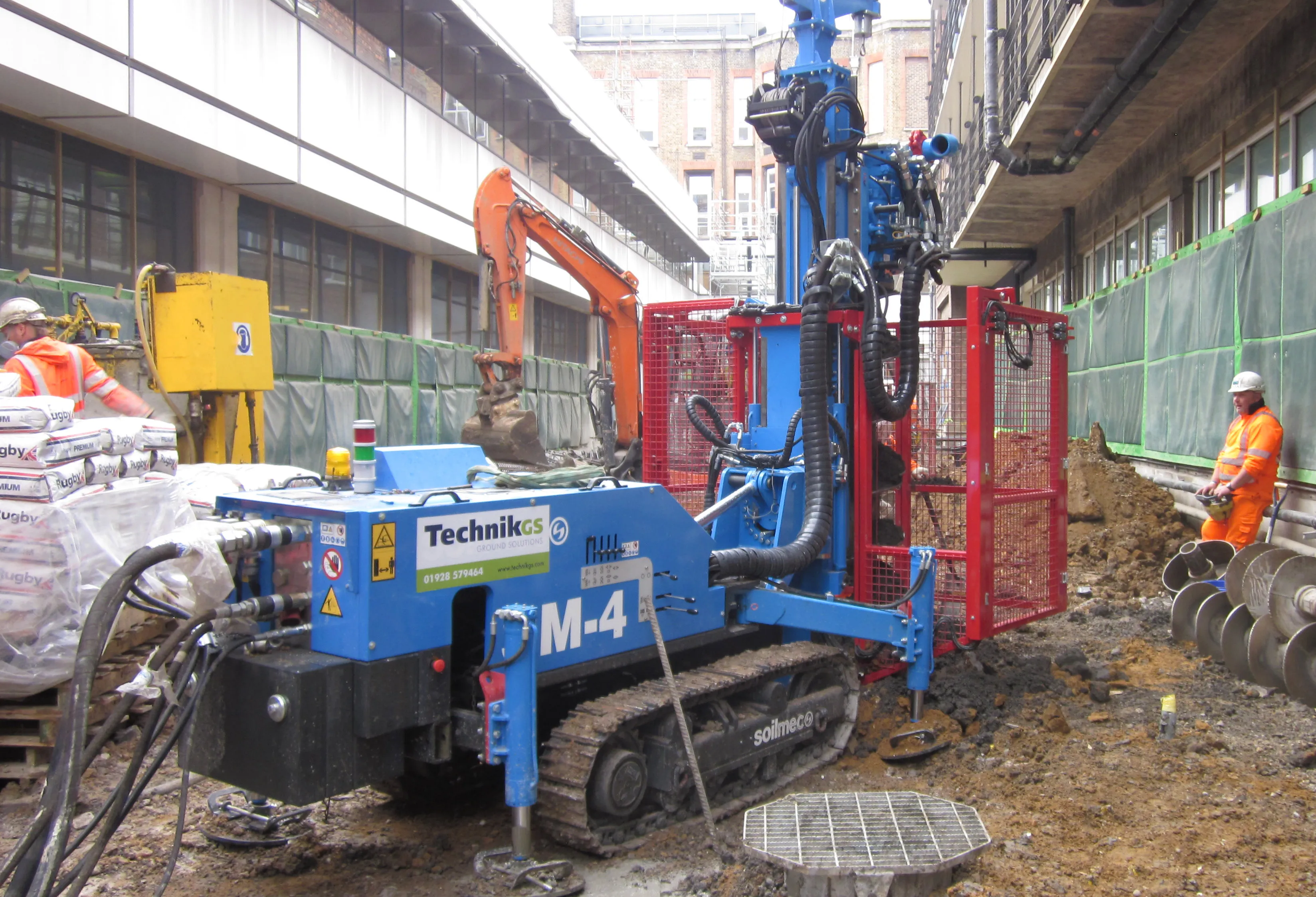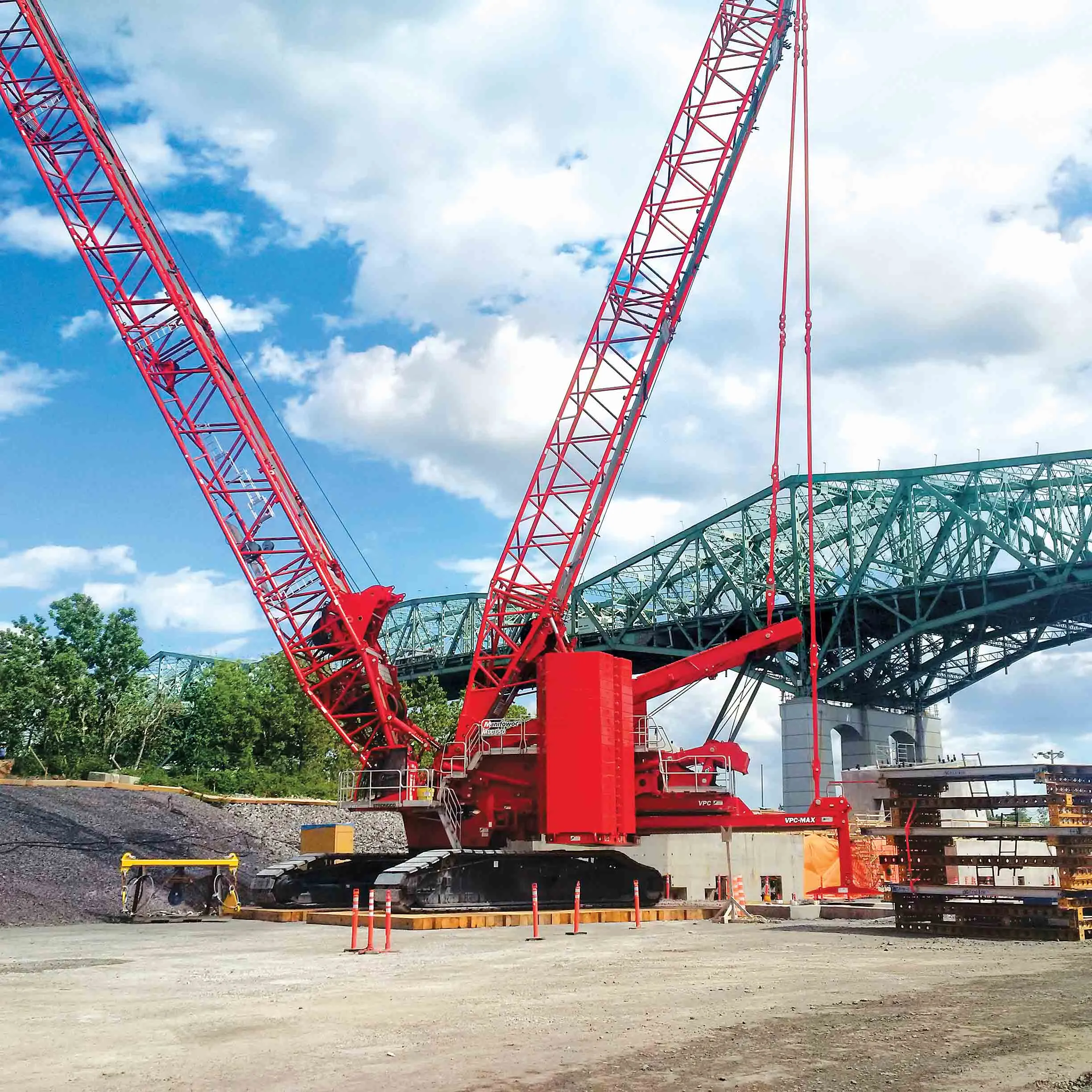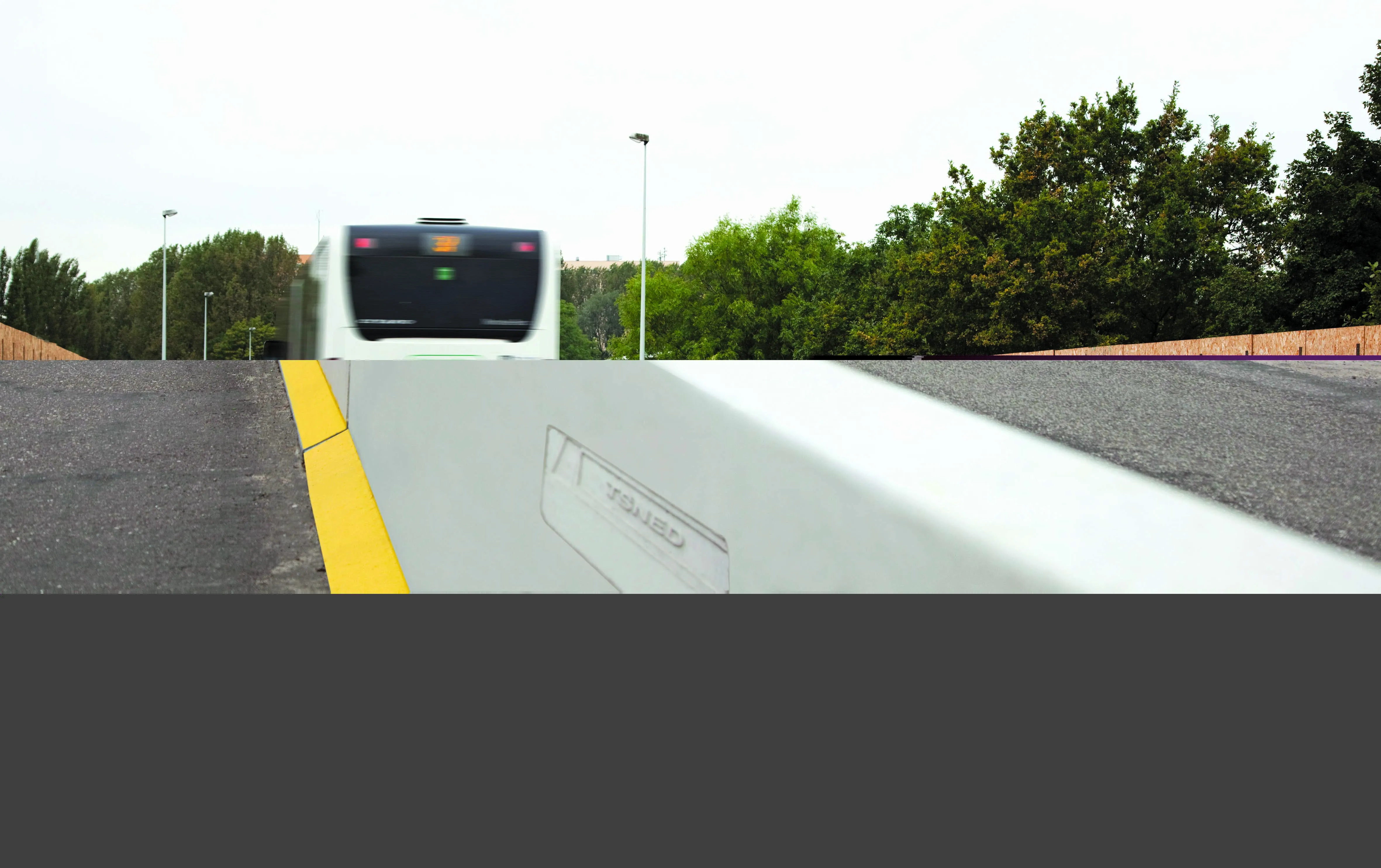Contractor BAM Nuttall and specialist piling sub contractor Aarsleff Piling, have been working closely to develop a cost-effective solution to a tricky piling problem. The two firms have developed an alternative and versatile technique to reduce the risk of delays installing 2,150 precast concrete piles along part of the route of an innovative guided busway in Cambridgeshire in the UK.
February 24, 2012
Read time: 4 mins

Contractor 3137 BAM Nuttall and specialist piling sub contractor 3138 Aarsleff Piling, have been working closely to develop a cost-effective solution to a tricky piling problem. The two firms have developed an alternative and versatile technique to reduce the risk of delays installing 2,150 precast concrete piles along part of the route of an innovative guided busway in Cambridgeshire in the UK.
The team initially planned using predetermined lengths of piles in the unpredictable ground conditions. But it soon became clear that there would be a need to drive longer piles than originally expected and this would have increased costs, while delays caused by the need for the longer piles would have boosted costs further. Instead the firms decided to use a more cost effective solution and install the majority of the piles with a half joint on their tops. If piles needed to be extended and driven further, a similar half jointed over pile with a single pinned connection could then be added.
The 25km guided busway has been designed for Cambridgeshire County Council by BAM Nuttall along the route of the old St Ives to Cambridge railway track and from Cambridge railway station to Addenbrooke's Hospital and Trumpington Park and Ride. When complete this will provide a new public transport alternative to driving along the congested A14 road linking St Ives and Cambridge.
The Cambridgeshire Guided Busway is designed as a dedicated twin track just for buses. Each track is made up of two precast concrete longitudinal beams with kerbs each side. Any bus can use the guided busway channel, as long as it has two small extra guide wheels mounted at the front. These engage with the kerbs and steer the bus along the track. The bus driver remains in control of motion but does not need to steer. These guided buses also drive on the normal roads, where they form part of the busway route, and use bus priority measures, including new bus lanes and bus priority traffic signals.
Aarsleff is supplying and installing 2,150 piles to support the guided busway over 4km of a 4.5km western section between St Ives and Swavesey. Aarsleff designed the piles and layout to accommodate the site investigation and track loadings supplied by BAM Nuttall's consultants, CGB Design, a joint venture between1419 Arup and 2693 Parsons Brinckerhoff. Piles are installed in transverse rows spanning the twin tracks and spaced at 7.5m intervals between rows. They have been arranged in a standard pattern of a row of six 350mm square section piles, followed by three rows of four 250mm square section piles, followed by another line of the larger piles for the sequence to be continued. All piles are supplied and made by Aarsleff's subsidiary Centrum Pile. The larger sections have to accommodate a working compressive load of 167kN and 80kN shear to cater for the breaking forces generated by the buses, while the smaller 250mm section piles have a working load of 274kN.
The piles have to be driven through made ground, soft clay overlying variable and unpredictable bands of sands and gravels over stiff clay. It was the intention for all piles to be driven to a set and found as end bearing in the gravels, but the thickness, depth and location of the gravels proved to be very unpredictable. If the design set was not achieved in the gravel, piles would need to be driven to a designed penetration into the underlying clays.
To tackle the conditions, all of the smaller section piles, about 1,400 of the total, were supplied with a half pin joint. Where these were installed, but did not achieve the set in the gravel, the contractor has been able to pin on an over pile section and continue driving to completion into the clay. Less than 10% of the piles have been extended in this way and while there has been an added cost for the joints, this technique has proven versatile and cost-effective. While more piles have been extended than expected, the cost of extending them is less than the costs that would have been generated. Unexpected flooding along one part of the site forced the piling to be carried out in two visits. Using a combination of two and three of its Banut 700 piling rigs with 4tonne drop hammers, Aarsleff completed the first section in eight weeks, four weeks ahead of its programme and the second is now underway.
After piling, BAM Nuttall follows on cutting piles to length and linking them in each row with a concrete pile cap beam cast insitu at ground level. The pile caps support the precast concrete bus guideway beams, which are placed by a launching gantry running on the previously placed beams. Precast concrete pad foot foundations support the twin tracks for the remainder of the guided route.
The team initially planned using predetermined lengths of piles in the unpredictable ground conditions. But it soon became clear that there would be a need to drive longer piles than originally expected and this would have increased costs, while delays caused by the need for the longer piles would have boosted costs further. Instead the firms decided to use a more cost effective solution and install the majority of the piles with a half joint on their tops. If piles needed to be extended and driven further, a similar half jointed over pile with a single pinned connection could then be added.
The 25km guided busway has been designed for Cambridgeshire County Council by BAM Nuttall along the route of the old St Ives to Cambridge railway track and from Cambridge railway station to Addenbrooke's Hospital and Trumpington Park and Ride. When complete this will provide a new public transport alternative to driving along the congested A14 road linking St Ives and Cambridge.
The Cambridgeshire Guided Busway is designed as a dedicated twin track just for buses. Each track is made up of two precast concrete longitudinal beams with kerbs each side. Any bus can use the guided busway channel, as long as it has two small extra guide wheels mounted at the front. These engage with the kerbs and steer the bus along the track. The bus driver remains in control of motion but does not need to steer. These guided buses also drive on the normal roads, where they form part of the busway route, and use bus priority measures, including new bus lanes and bus priority traffic signals.
Aarsleff is supplying and installing 2,150 piles to support the guided busway over 4km of a 4.5km western section between St Ives and Swavesey. Aarsleff designed the piles and layout to accommodate the site investigation and track loadings supplied by BAM Nuttall's consultants, CGB Design, a joint venture between
The piles have to be driven through made ground, soft clay overlying variable and unpredictable bands of sands and gravels over stiff clay. It was the intention for all piles to be driven to a set and found as end bearing in the gravels, but the thickness, depth and location of the gravels proved to be very unpredictable. If the design set was not achieved in the gravel, piles would need to be driven to a designed penetration into the underlying clays.
To tackle the conditions, all of the smaller section piles, about 1,400 of the total, were supplied with a half pin joint. Where these were installed, but did not achieve the set in the gravel, the contractor has been able to pin on an over pile section and continue driving to completion into the clay. Less than 10% of the piles have been extended in this way and while there has been an added cost for the joints, this technique has proven versatile and cost-effective. While more piles have been extended than expected, the cost of extending them is less than the costs that would have been generated. Unexpected flooding along one part of the site forced the piling to be carried out in two visits. Using a combination of two and three of its Banut 700 piling rigs with 4tonne drop hammers, Aarsleff completed the first section in eight weeks, four weeks ahead of its programme and the second is now underway.
After piling, BAM Nuttall follows on cutting piles to length and linking them in each row with a concrete pile cap beam cast insitu at ground level. The pile caps support the precast concrete bus guideway beams, which are placed by a launching gantry running on the previously placed beams. Precast concrete pad foot foundations support the twin tracks for the remainder of the guided route.








